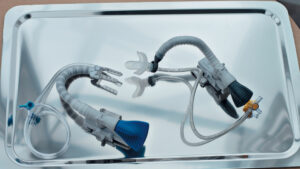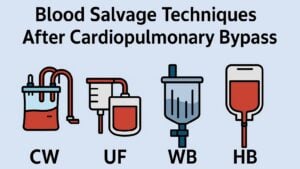Summary: The article titled “Advocating for an Open Communication Culture in Perfusion and Cardiothoracic Community: A Call to Action” presents a compelling argument for the necessity of fostering an environment of open communication within the perfusion and cardiothoracic surgery disciplines to enhance patient safety and surgical outcomes. Authored by Salman Pervaiz Butt, Yasir Saleem, and Bill Cook, the piece underscores the critical role that each team member, including nurses, anesthesiologists, and perfusionists, plays in contributing to a safer surgical environment by openly sharing insights and concerns.
The central thesis of the article posits that an open communication culture is paramount in the context of intraoperative cardiothoracic surgery, where the stakes are exceptionally high. It emphasizes that despite existing hierarchical structures within surgical teams, the value of input from all members cannot be overstated. By empowering individuals such as perfusionists to voice their concerns without fear of reprisal, the article suggests that patient safety can be significantly enhanced.
One of the primary tools advocated for in promoting such a culture is the World Health Organization (WHO) surgical safety checklist. This checklist serves as a critical component in ensuring that vital steps are not missed during surgery, risks are identified early, and there is a seamless exchange of information among team members. The authors argue that despite potential challenges in its implementation, the checklist is essential for developing a strong safety culture and improving patient outcomes.
Perfusionists, who are responsible for operating the heart-lung machine during cardiothoracic surgeries and ensuring the maintenance of vital functions, are highlighted as playing an invaluable role in the surgical team. The article acknowledges that perfusionists globally may face difficulties in expressing concerns during surgeries due to a variety of factors, including fear of being perceived as insubordinate or fear of negative repercussions. However, it stresses the importance of overcoming these barriers to promote a culture where everyone feels comfortable speaking up.
The discussion section of the article delves into the consequences of inadequate communication, including past incidents where the lack of safety devices and proper monitoring tools led to accidents. It illustrates how advancements in technology, such as modern cardiopulmonary bypass pumps with enhanced safety features, can help mitigate these risks. Nevertheless, the authors assert that technology alone is insufficient without a supportive culture that encourages open dialogue.
To foster this culture, the article recommends the regular conduct of debriefs and root cause analyses, with active participation from perfusionists to share their perspectives and contribute to the collective understanding of adverse outcomes. Furthermore, the implementation of data management systems is advocated for as a means of protecting perfusionists from undue blame and facilitating continuous improvement through retrospective analysis.
In conclusion, the article makes a powerful case for the critical need for open communication in the realm of cardiothoracic surgery, emphasizing its indispensability in ensuring patient safety and optimal outcomes. It calls for all team members to be empowered to share their observations and concerns, and for healthcare organizations to prioritize the implementation of practices such as the WHO surgical safety checklist. Through such measures, the article envisions an improved standard of care in perfusion and cardiothoracic surgeries, characterized by enhanced patient outcomes and a reduction in unsafe practices.







